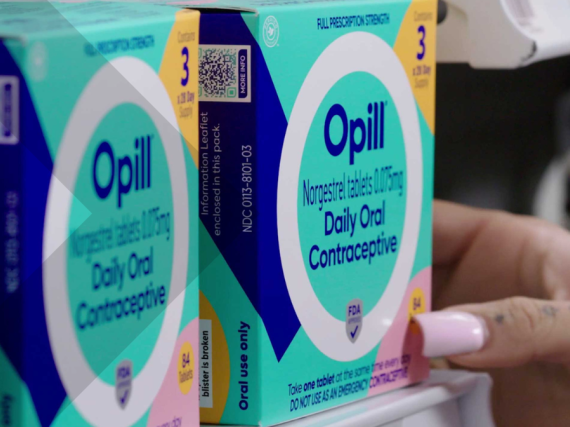Increasing Birth Control Access in Ohio through Public-Private, State-Local Partnerships
At 106 years old, The Center for Community Solutions has served Cleveland in many ways. Founded during a time when a lack of social safety nets meant that many relied on the charity of strangers to feed, clothe, and house their families, Community Solutions aimed at first only to better coordinate the efforts of disconnected charities across the City of Cleveland. Only a few years later, it broadened its scope to look at how best to care for older adults. During the Great Depression, the organization again expanded its focus to meet the health care needs of Clevelanders more broadly.
In the 1970s Community Solutions (then known as The Federation for Community Planning) entered the world of family planning as a neutral convener for the region’s Title X program. Hosting the program as a grantee for more than 30 years, we worked with many wonderful partners. But as times and problems change so too did our approach to solving them.
For the last 8 years, Community Solutions has hosted the Collaborative for Comprehensive School-Aged Health, a community effort to move the needle on comprehensive sex education. Alongside 20 other organizations we look for ways to improve access to medically accurate, age appropriate and, inclusive sex education through capacity building and policy changes at local districts. Our Collaborative members come from diverse program and service backgrounds: youth-serving organizations, sex education facilitators, Title X providers, adolescent health clinicians, and health philanthropies, among others. In 2015, the Collaborative began sharing and discussing data coming out of projects in Colorado and Missouri – as well as more locally in Columbus, Ohio – to reduce barriers to offering long-active reversible contraception (LARC) to patients. The work fascinated us and so many questions arose from our initial meetings, we knew we had to explore them further. With clinical, communications, and policy components, and a myriad of amazing partners, we created and evaluated a pilot project ‒ Better Birth Control NEO ‒ to reduce clinical barriers to LARC method provision and help interested patients receive methods the same day as their appointment.
Through our Better Birth Control NEO clinical training partner, Upstream USA, we learned about Power to Decide’s WhoopsProof social marketing campaign, which was then in development. The campaign provides information about IUDs and the implant, and links local women to clinics that can provide additional information and access to their contraceptive method of choice. We had an opportunity to work with Power to Decide to pilot the campaign and we continue to use WhoopsProof creative locally. With the success of the pilot, the Ohio Department of Health adopted the WhoopsProof campaign too, so it is now available to Title X and other family planning partners in Ohio.
Our work to inform lawmakers and state policy has also seen success – at a time when the state was directing much needed attention to the high infant mortality rates. We have real champions in the state legislature who saw our collective work and helped expand it in Ohio. In 2017, the Ohio legislature passed SB332, a bi-partisan bill to implement a number of recommendations to reduce infant mortality across the state. Given the connections between maternal health, infant health, teen pregnancy, unintended pregnancy, and birth spacing, the bill included robust LARC provisions. For example: supporting in-patient LARC access at delivery; technical assistance for outpatient clinics to transform their practices to better serve patients interested in LARC methods; and a call for medical education that resulted in a wonderful clinical curriculum for clinicians who work with family planning patients.
We are currently co-convening another group, LARC Access Ohio, where practitioners from across the state can get in the weeds on how to best improve awareness of, and access to, LARC methods in their communities. Through LARC Access Ohio, practitioners support each other to incubate projects, e.g., for women who are in recovery from substance use disorders; communities that haven’t had providers trained to place LARC methods; organizations piloting One Key Question® or other national models; to improve birth spacing and/or teen pregnancy prevention; and the list goes on. The work is all about elevating and disseminating both best practice as well as what’s not working, so we can all make progress while not making the same mistakes.
Through public-private and state-local partnerships like the ones above we’ve achieved so much. It’s exciting to work with so many dedicated and diverse individuals and organizations who want to do better for Ohio women. We aim to continue to elevate the importance of family planning in Ohio, with a goal of continuing to improve maternal and infant health across our state.


